

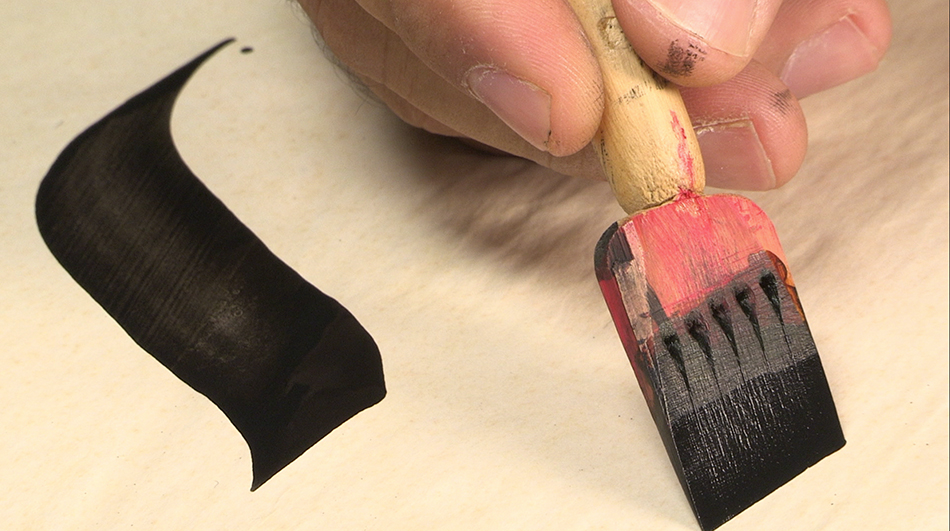
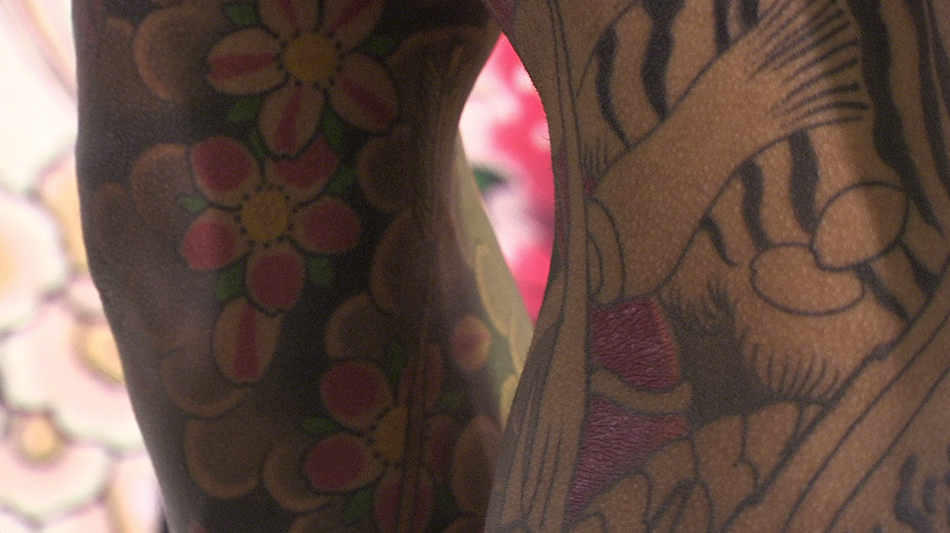
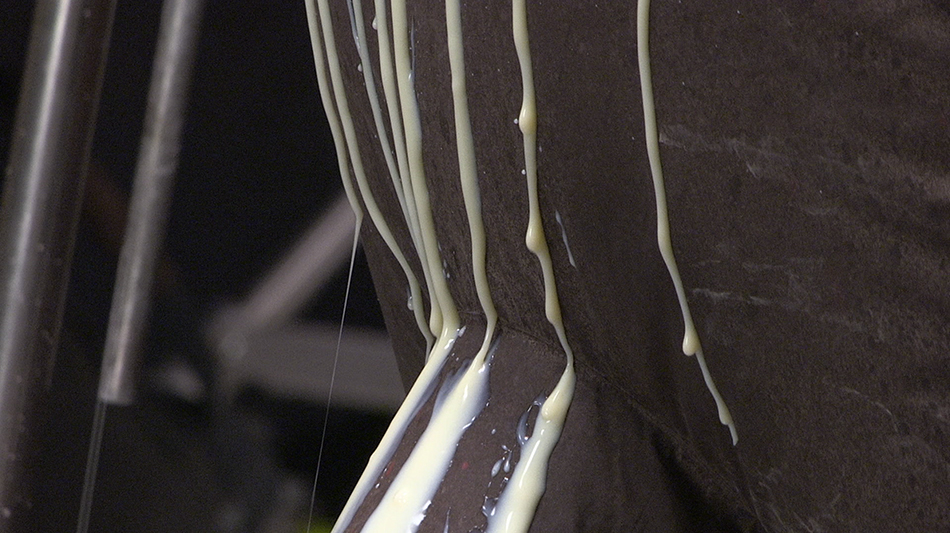
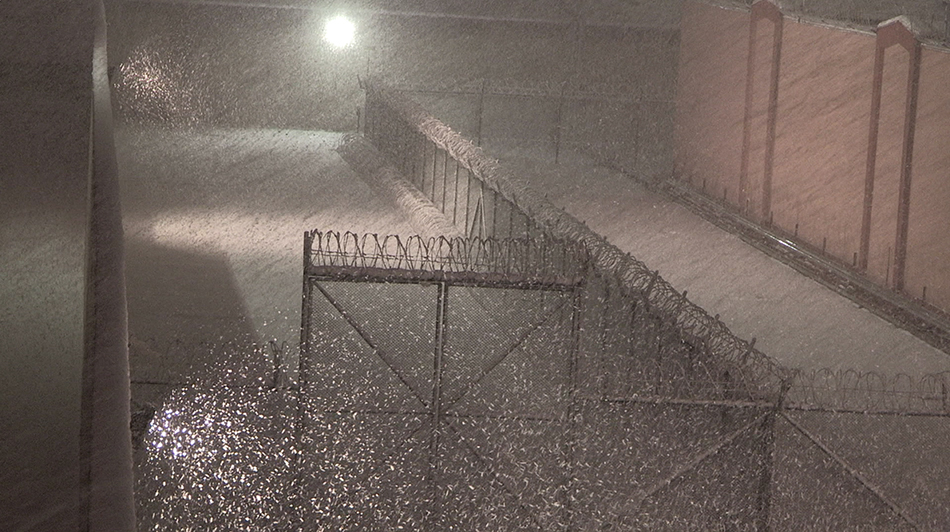

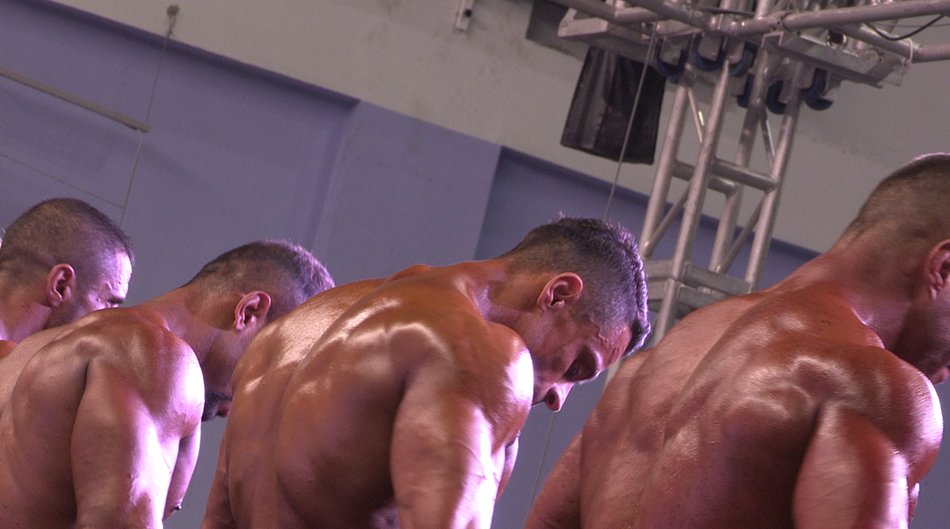
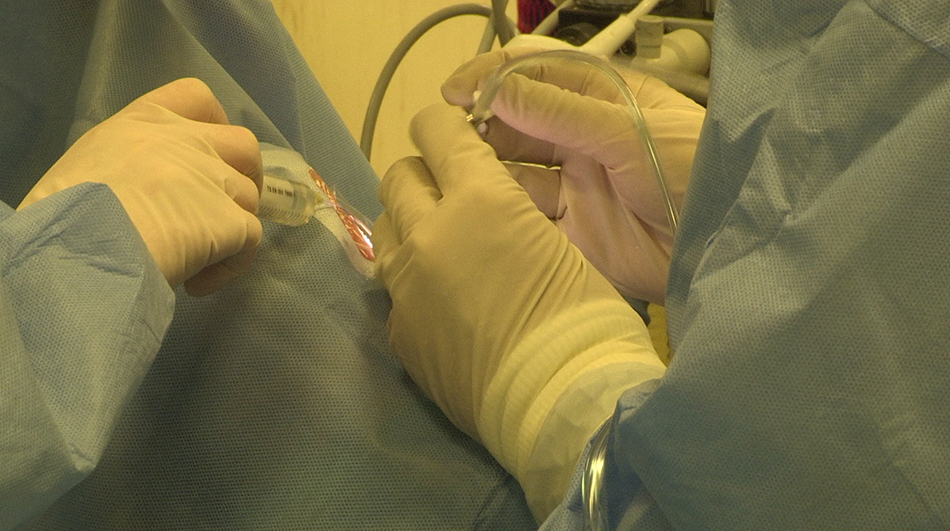
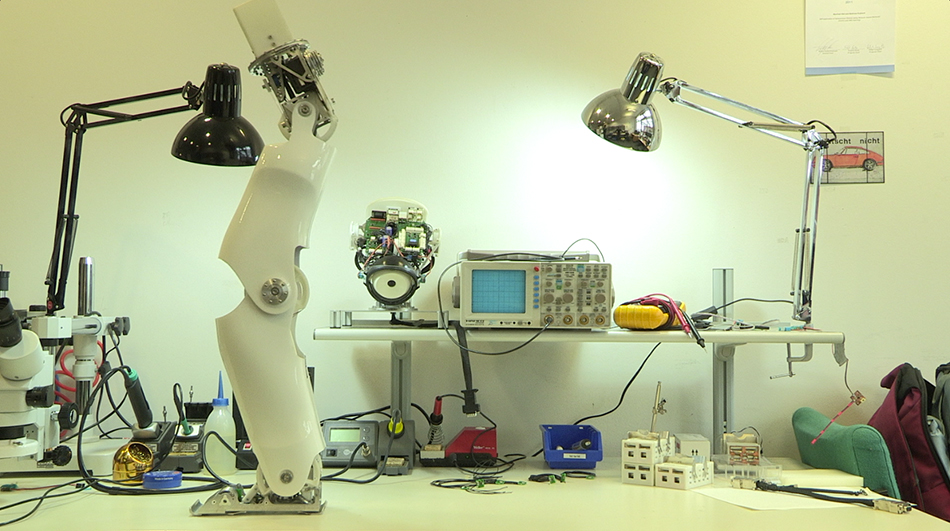
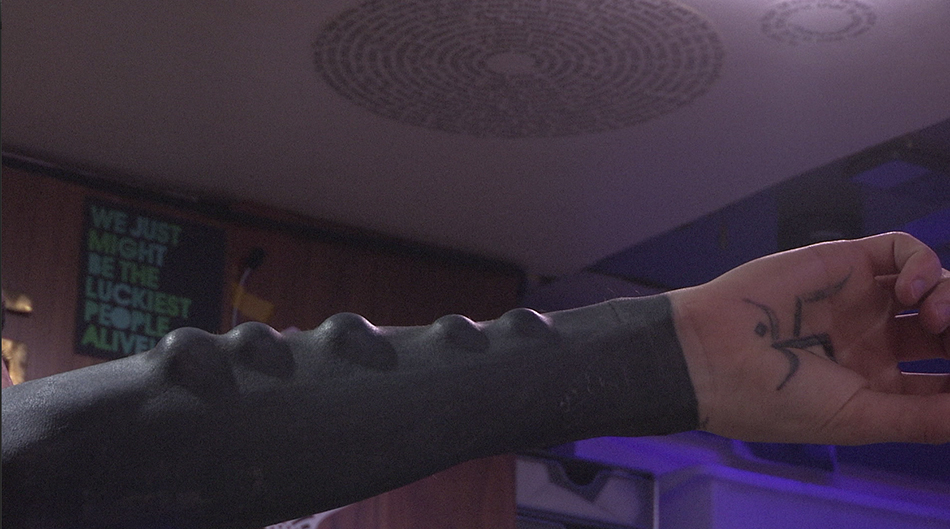
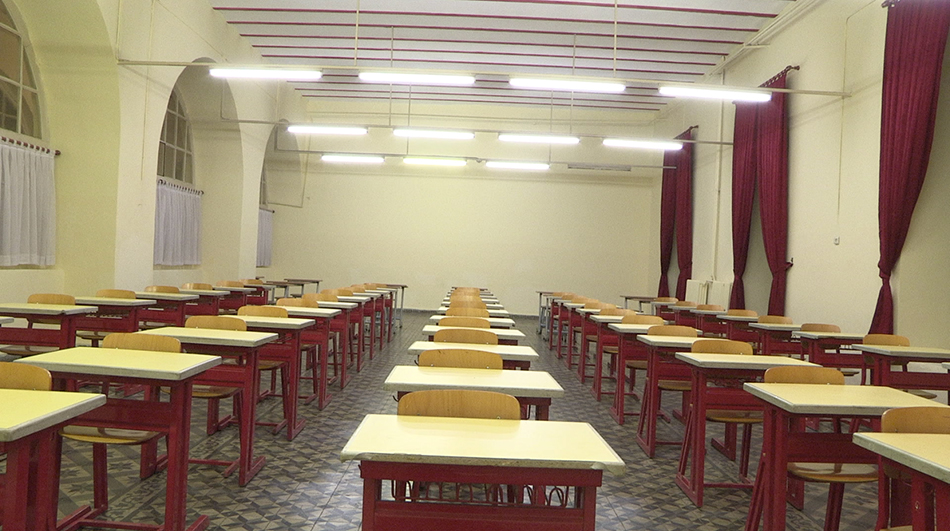
In his video series entitled “Resistance”, Ali Kazma explores the interventions and strategies that both release the body from its own restrictions and restrict it in order to control it. As an extensive survey on the contemporary discourses, techniques and management tactics developed for the human body, “Resistance” is an attempt to unravel the interventions imposed and practised on the body today. The series promises to expand over time in order to venture further into the infinite scope of knowledge that counts the body as its source—both as a real and restricted image, and as a field of infinite possibilities. It also provides important clues regarding the direction Kazma’s artistic production is likely to evolve in.
In “Obstructions”, another series he began to produce in 2005, Ali Kazma has carried out research into the tense equilibrium between order and chaos, life and death. In these works, he observed the human effort to hold together a world that inclines towards disintegration and destruction; the diversity of physical production developed to achieve this ‘unity’; and what such production might mean within the context of human nature. The “Obstructions” series, presently comprising 16 works, was instigated by a 37-day performative work Ali Kazma created for a public space project, “Istanbul Pedestrian Exhibitions II: Tünel-Karaköy” (2005). In this work entitled “Today”, he tracked down micro-level production and repair activities within the workaday life of the neighbourhood where the exhibition took place. He first recorded these activities and edited them in his studio during the day and later projected them onto a shop window facing Tünel Square in the evening of the same day. This performative work articulated the artist’s own physical and mental labour as part of the daily routine of the neighbourhood and revealed all kinds of production, maintenance and repair activities that we often pass by without paying any attention to—or do not see at all, because they are carried out indoors. Within a fragmented structure, “Today” explored ‘working bodies’ in the broadest sense of the word, focusing on their common gestures and acts, which are often performed with tools that function as extensions of the body. It also examined the grammar of their language, developed through the similarities and differences between these gestures and acts.
The “Obstructions” series that followed was triggered by the idea of revisiting the fragments that made up “Today”. The majority of works in the “Obstruction” series deal with the human beings’ effort to secure the continuity, comfort, measurement, control, maintenance and healing of the body. The field of execution, or the final product of such activities could be a material object that supports or supplements the body (“Jean Factory”, “Rolling Mills”, “Clock Master”, “Cuisine”), while at other times the body is revealed in performance (“Dancer”, “Painter”), or becomes the site of the performance itself (“Brain Surgeon”). The title of this series refers to the fundamental scientific truth that everything must eventually disintegrate and perish. Here, ‘obstructions’ point to the sum of production and repair activities as the individual’s endless effort to fight this inevitable process of annihilation—and ultimately, death—in order to at least slow down and delay this process.
In a similar manner that “Obstructions” emerged from “Today”, “Resistance” is now evolving out of the “Obstructions” series to explore the ways in which the body is shaped today through scientific, cultural and social tools, and how as a performance site it is repeatedly reproduced. In other words, “Resistance” conveys the productive activity of the body as a creative force directly onto the body itself: the producer and the produced, the shaper and the shaped are united here in the materiality of the body.
During the almost one-year long filming process of “Resistance”, Ali Kazma visited various sites to record the processes that both construct and control the body. He explored the struggle to break the social, cultural, physical and genetic codes of the human body in order to render it perfect, as well as the processes during which the body becomes, or is transformed into a conveyor of new symbols and meanings.
Brought together under the title “Resistance”, these videos complement each other within the composition of a single installation and explore the construction of the material body in three different layers. If we were to imagine the body as a “disposable shell”, but at the same time it is “the physical enactment and guarantor of the self”1, Ali Kazma’s camera not only looks at this resistant shell and the interventions applied to it, but also descends into what lies beneath this surface, into the fabric that holds the body together yet also causes it to dissolve, in other words, into the field of flesh as the ultimate material state of the body. A third layer then emerges as the institutional/spatial shells that surround and shape the body, discipline it, constantly inspect it and subject it to control and surveillance.
In “Resistance”, Ali Kazma explores the interventions on the body not only through the subjects before his camera, but also through the spaces that stage its reconstruction. He seeks the counterpart of the metaphor that, since Ancient Greece, has spatialised the body as a coffin, cage or prison of the mind and the spirit in architecture and spatial organisation. Although he almost never shows the body itself in these works, his camera targets the sites that recall the control, discipline and restriction of the body.
Instead of adopting a reductionist approach that challenges the mystery of the body and tries to understand it almost as an anatomical object, “Resistance” attempts to read the complex meanings and enigma produced by the body as a physical and conceptual space from within a broad network of relations. In this multi-channel video installation premiered at the Venice Biennale, Ali Kazma researches the networks that shape the body within social, cultural and scientific layers. The relationship between “being a body” and “having a body”2; and the tension that emerges within the infinite possibilities and borders of the body as a field of information, control and performance are explored under a range of diverse definitions and perceptions such as ‘material body’, ‘social body’, ‘body under surveillance’, ‘disciplined body’, ‘body at work’, and ‘the sexual body’.
Ali Kazma filmed this comprehensive project in various parts of the world, in different settings and with different subjects: a film set in Paris, a prison in Sakarya, a school and a hospital operating room in Istanbul, a cryonics institution in the US, a university in Berlin where robot production and experimental research is carried out, a medical research laboratory in Lausanne, a tattoo studio in London, and a theatre hall in New York where rehearsals of Hamlet were held, just to name a few.
In an interview3 he gave during the production process of “Resistance”, Kazma stated that he is interested in how human beings transform their surroundings as they produce and how in return they are transformed by the world, and what he actually explores in his works is this specific, reciprocal interaction. “Resistance” series (as in “Obstructions”) carries out research into production processes developed by humans in order to shape the world, yet this time it places the human body, itself shaped by and within these processes, at its centre. Presented for the first time at the 55th Venice Biennale as a multi-channel installation with a spatial organisation that surrounds the viewer, “Resistance” adds yet another body to the interaction that Ali Kazma has formed with the world.
